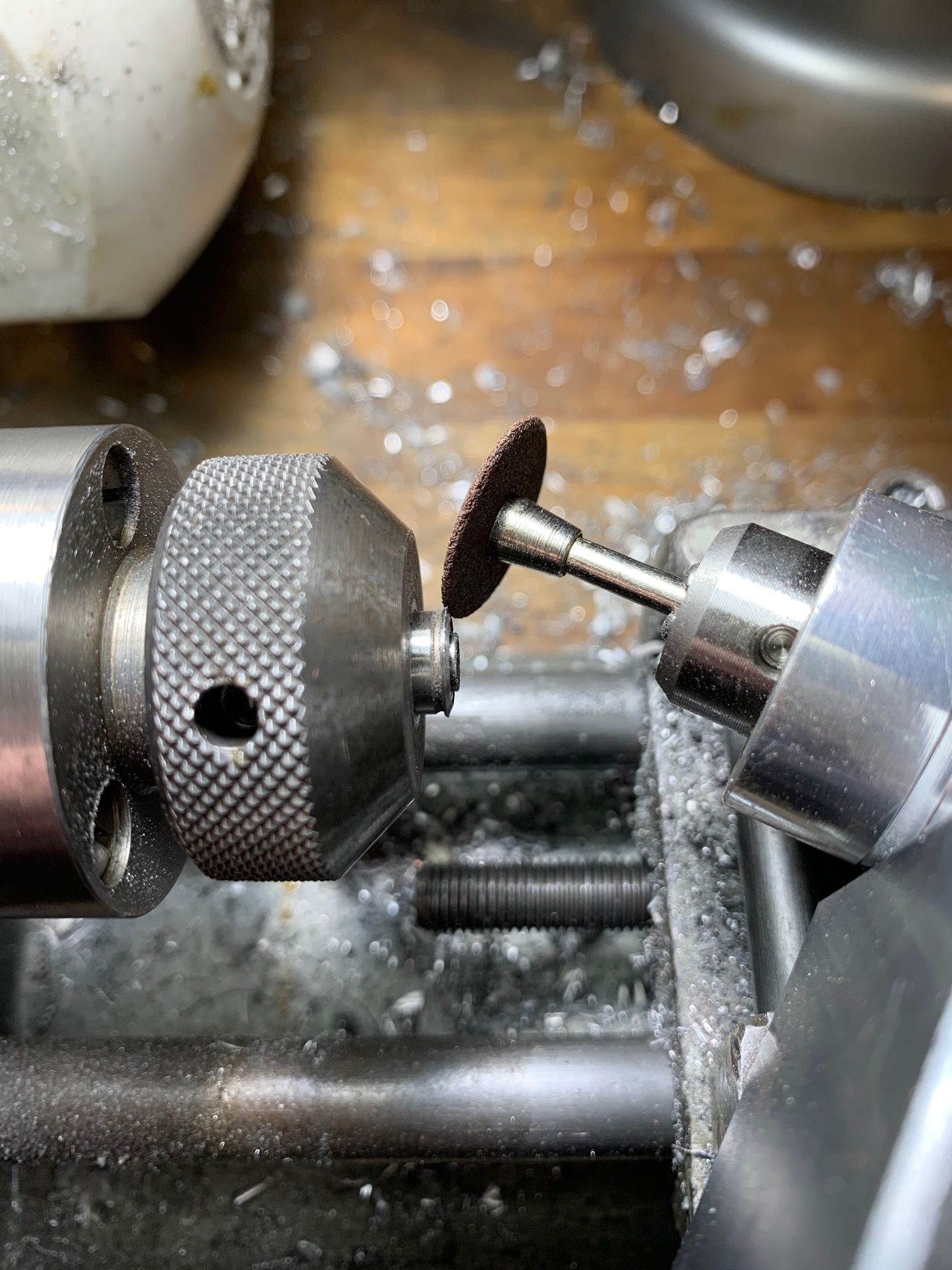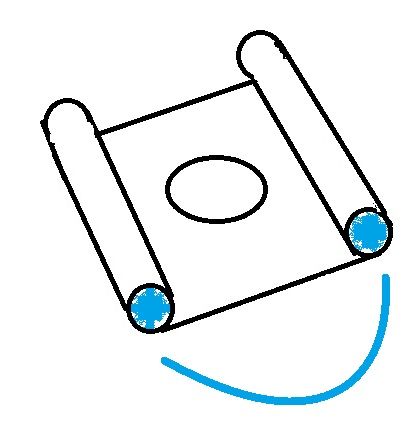Hollow shaft extruder
-
@fma said in Hollow shaft extruder:
@rqthree There is a problem with these files: Carrier_Assy.FCStd and Knife_Bearing.FCStd ; I'm unable to open them, neither other people at my hackerspace (they freeze or crash FreeCAD).
Could you save them as STEP files?
Thanks,The files are fine, but were generated with a very high definition version of FreeCad. They will eventually open, but may take many minutes on a pretty high power workstation. In any case, the two files you reference are not at all important, and just show the over-all arrangement of parts.They don't contain any critical dimensions or data not seen in the other files.
-
@rqthree Ok, I see!
-
@rqthree BTW, how do you get the sharp edge on the flanged bearing? With a lathe?
-
@fma , yes, I use a collet chuck in a jewelers lathe, with an abrasive disc on a rotary tool. Others, like Tom Brazier, have come up with clever methods that don't require a lathe.

-
@rqthree Thanks, I'll read the entire thread again to see how other guys do...
-
@o_lampe said in Hollow shaft extruder:
@rqthree The left/right rotation is a good idea.
Otherwise It is a bit similar to my dual motor approach, but I'll put a Bowden tube between the two. No weight panelty and free choice for the remote motor.I'm also a bit worried about temperatures and sketched up a thin watercooling plate to fit between your motors. A bit more weight doesn't make much of a difference, you already fouled there anyway


The dual motor Push-Me-Pull-You VDE works fine at 0.2 amps driving two paralleled NEMA 11 motors. The motors get slightly warm after several hours of continuous operation, but nothing that affects even PLA.
-
@rqthree I vote we call this push pull version VDE337.
-
@tombrazier said in Hollow shaft extruder:
@rqthree I vote we call this push pull version VDE337.
Tom, I have to ask...??? I know there is always a method to your madness, but I have wracked my brains on this one.
EDIT: Never mind, you Cessna driver. VDE337 it is!
-
Some updates from me...
I have experimented further with the LDO motor. For everything other than ridiculously fast printing it's great. The primary limitations I have found are that continuous current much above about 600mA will eventually cause it to get too hot for PLA and at any current E jerk needs to remain quite low (e.g. max 7mm/s) for the VDE which has quite a high steps/mm ratio. On the other hand it has great acceleration and speed, I can get 1000mm/s/s even with the high step/mm count of VDE and top speed is about 60mm/s (with no load) and over 10mm/s driving filament into the hot end.
One day I might figure out how to get TMC CoolStep to help with the current. And I have dreams of implementing a jerk-less version of Linear Advance in Marlin which would pretty much remove the jerk limit as an issue.
In other news, I have uploaded a video about the bearing grinder jig.
And, further news, with a PLA printed carrier the 3 back-to-back bearing pairs version of the extruder seems to work pretty well. I have used a bite of 0.07mm for this version. @o_lampe it works a lot better than with your printed carriers which leaves me wondering whether something like material flexibility might be an issue. I am also coming to the conclusion that it's best to grind the bearings first and then measure them and print a carrier to match their edge diameter. That's a lot easier than grinding an edge down to the exact diameter.
-
@tombrazier said in Hollow shaft extruder:
grinding an edge down to the exact diameter.
Both precedures aren't mass-production friendly. The skrewder wraps the screws around the filament which results in adjustable bite and fast changeable filament ability.
If we could change the VDE100 design to be wrappable, it would be best of both worlds. -
@o_lampe said in Hollow shaft extruder:
@tombrazier said in Hollow shaft extruder:
grinding an edge down to the exact diameter.
Both precedures aren't mass-production friendly. The skrewder wraps the screws around the filament which results in adjustable bite and fast changeable filament ability.
If we could change the VDE100 design to be wrappable, it would be best of both worlds.I must respectfully disagree on both counts. Holding sub-micron tolerances is common practice in manufacturing these days, and the VDE does not need "adjustable bite" and "fast changeable filament ability". It already does these things by design, albeit perhaps serendipitously.
I believe that one must be very conscious of the goals of a particular idea, declare victory when achieved and then move on, rather than try to force fit what has worked before into what is needed now.
Personally, I believe that increases in FDM printing speeds will only come from smaller diameter filament. All existing extruders (the VDE included) are limited in their extrusion rate by how quickly you can melt a column of plastic 1.75mm in diameter.
-
@rqthree "being done is a decision" that must be made. Kudos!
-
@oliof said in Hollow shaft extruder:
@rqthree "being done is a decision" that must be made. Kudos!
Yeah, rq3's comments struck a chord with me too.
-
Hi All,
I’ve just finished for the holiday break and wanted to look at the hollow shaft extruder, is there a good consolidated reference material somewhere on the web?I specifically want to order some flanged bearings to go with the carriers I already have but I can’t find the specs… unfortunately I don’t have time to dig into the thread befor Xmas but I want to order parts to grind the flanges and tinker with between Xmas and new year.
Any thoughts would be greatly appreciated.
Many thanks
Barry M -
Update - I’ve ordered 8x3x4mm flanged deep groove bearings, hopefully I’ve made the right choice… please let me know if I should order something else…

-
@CNCModeller you can find Tom's stuff at https://www.printables.com/model/268255-vde100-rotary-extruder and rqthrees at the reprap forums ( no link at hand it easy to find).
-
@oliof Thanks for the heads up, I’ve now ordered the correct bearings! Looks like I will be ready to tinker when I get the chance

-
General question, so we grind the bearings back to 9.1 mm, how much intersection with the filament does that result in? Or to put it another way, how much do the flanges bite into the surface?
Also how significant is the drag / twist on the filament, does the contra rotating pair of blade sets make a significant difference? I’m assuming there is an amount of backlash like behaviour due to the twisting effect.
Any thoughts would be appreciated
All the best Barry M
-
@CNCModeller, less is better. As Tom said, it may be better to print a carrier that works with the bearing flange diameter that you've made.
Playing with the VDE-337 (which I won't pursue anymore), it became even more apparent that a gentle kiss of the knife edge (0.1 mm or 0.004 inch) is about ideal.
If you are printing the carriers, plain PLA is infinitely better than anything else, at least in the short term. PLA is very stiff, and acts very much like aluminum as regards machining, drilling, tapping, etc. It's just not tolerant of higher temps, and cold flows over time under pressure.
Filaments like PETG are, in my experience, way too "rubbery" to make a bearing carrier of any use in this application.
I have had all of my carrier designs CNC milled from 7075 aluminum to avoid these effects, since we are talking about micron level precision, and just today finished an exercise regarding print surface finish versus extruder knife edge bite depth.
Results: again, the less, the better.
I never intended for this to be a high speed extruder. I intended it to be a very accurate and reproducible extruder.
Regards,
Rip -
@rqthree said in Hollow shaft extruder:
I never intended for this to be a high speed extruder
...which is a pity, because it's the lightest DD-extruder ever.
Regarding print-speed on my Delta it can almost compete with a flying extruder setup, but with better ooze control.
I think it deserves to up the speeds a bit. With my BLDC/simpleFOC extruder I can go 120-150mm/s before I see underextrusion.